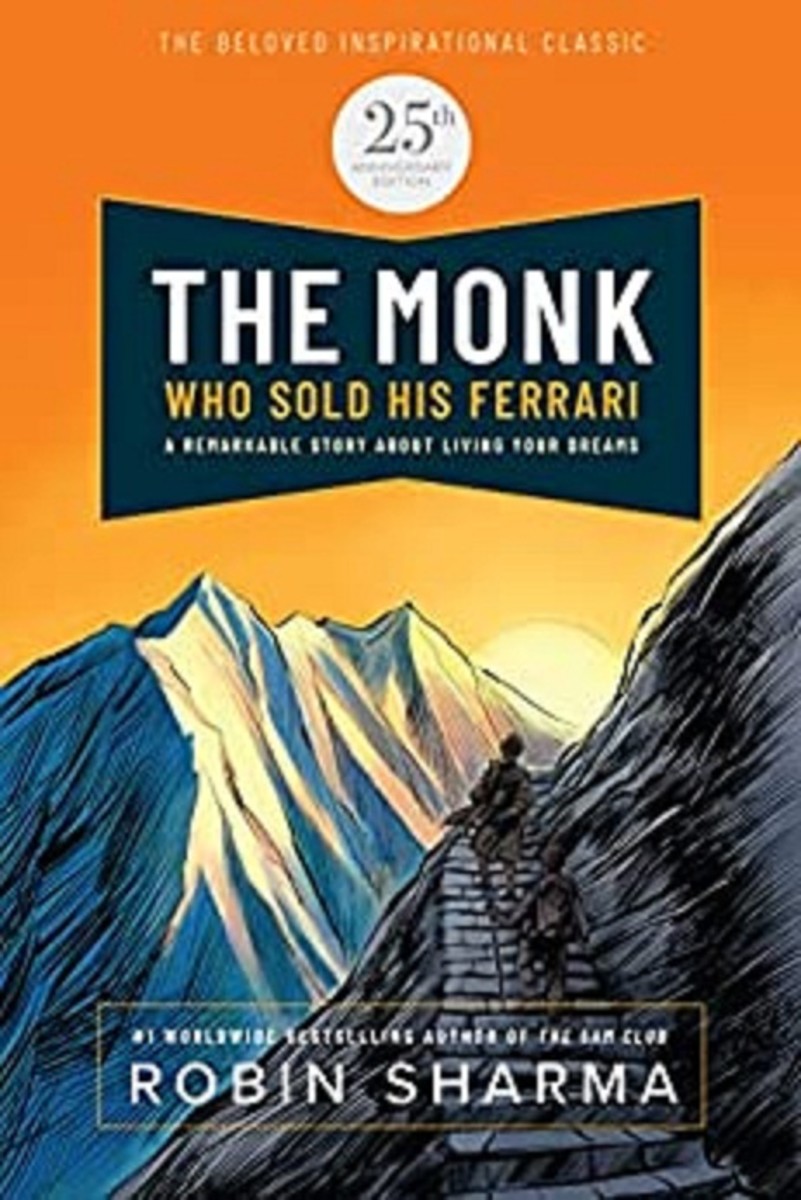The literary gem, “The Monk Who Sold His Ferrari,” penned by the astute Robin Sharma, extends an invitation to embark on a profound journey of self-discovery and personal fulfillment. This book, an intriguing blend of narrative philosophy and practical wisdom, resonates with anyone grappling with the frenetic pace of modern life. Sharma’s narrative centers around Julian Mantle, a high-powered attorney who, in a moment of existential clarity, decides to sell his possessions—including his prized Ferrari—to seek deeper meaning and contentment. Through Julian’s transformative odyssey, readers can expect an amalgamation of inspiration, introspection, and actionable insights.
As the story unfolds, the initial chapters immerse readers in the world of Julian Mantle, replete with his monumental success but devoid of true happiness. The narrative elucidates the pressures of relentless ambition and the hollow achievements that often accompany them. Through Julian’s disillusionment, Sharma expertly highlights a phenomenon many experience in contemporary society—the dichotomy of material success versus genuine fulfillment. For those ensnared in the whirlwind of their careers, the revelation that wealth and status do not equate to happiness is both poignant and unsettling.
Upon his transformation, Julian relocates to the serene landscapes of India, where he encounters a group of luminescent sages. The encounter with these wise mentors serves as the crux of Julian’s metamorphosis, imbuing the narrative with an air of mysticism and enlightenment. The sages impart profound lessons encapsulated within the Seven Virtues of Enlightened Living. Readers are not merely passengers on Julian’s journey; they are offered the opportunity to absorb these virtues and integrate them into their own lives. This seminal aspect of the book transforms it from a mere narrative into a veritable manual for personal growth.
The Seven Virtues themselves are a veritable treasure trove of wisdom. They encompass aspects such as mastery over one’s mind, the importance of purpose, self-discipline, and the cultivation of inner peace. Each virtue is dissected comprehensively, offering the reader a rich tapestry of insights, anecdotes, and thought-provoking narratives that elucidate their significance. The use of engaging metaphors and vivid imagery enhances the retention of these complex ideas, allowing readers to visualize and internalize the teachings conducted through a storytelling lens.
One of the most compelling elements of Sharma’s book is the contrasting imagery he employs throughout the narrative. The opulence and chaos of city life are juxtaposed against the tranquil simplicity of the monks’ existence. This contrast underscores a pivotal theme: true wealth cannot be measured tangibly but rather exists in the richness of experiences and personal relationships. The vivid descriptions of the serene Himalayan landscapes evoke feelings of peace and foster a sense of longing for such simplicity among the readers, enticing them to reconsider their lifestyle choices.
As readers delve deeper into Julian’s evolution, they encounter a series of challenges and triumphs that mirror their own struggles. The author artfully weaves practical exercises into the narrative, such as mindfulness techniques and discipline strategies, encouraging readers to apply these practices to their own lives. This interactive approach transforms “The Monk Who Sold His Ferrari” from a passive reading experience into an engaging journey of active participation. The call to action is clear: embracing a contemplative lifestyle requires effort, but the rewards are bountiful.
Moreover, the tone of the book resonates with an optimistic and empowering spirit. Each page seems to pulsate with energy as Julian engages with his new philosophy, which is profoundly infectious. Readers are left with an invigorated sense of purpose, coupled with a yearning to explore new horizons, to challenge their own notions of success and joy, and ultimately to reclaim their inner peace. This unmistakably enthusiastic tone is a hallmark of Sharma’s style, making even the heaviest of subjects accessible and engaging.
In addition to its transformative insights, “The Monk Who Sold His Ferrari” also touches on the intricate relationships in life. Julian’s interactions with his mentors and fellow seekers serve as a reminder of the power of community and shared experiences. The narrative underscores that while the journey toward personal enlightenment may be solitary, the support and wisdom of others can profoundly shape that journey. This illustrates a core principle: personal growth is often augmented through shared human connections, which are invaluable as we navigate the complexities of life.
In conclusion, readers who journey through “The Monk Who Sold His Ferrari” are not simply entertained; they are initiated into a deeper understanding of life’s purpose and meaning. The book serves as a catalyst for reflection and inspiration, steering individuals away from the mundane pursuit of materialism toward a more wholesome and fulfilling existence. Its interplay of narrative and philosophy, paired with actionable advice, crafts a reading experience that is both enriching and enlightening. As Julian Mantle casts aside his wealth in pursuit of wisdom, readers, too, are inspired to reassess their priorities and seek a path that leads not just to success, but to profound contentment and serenity.
